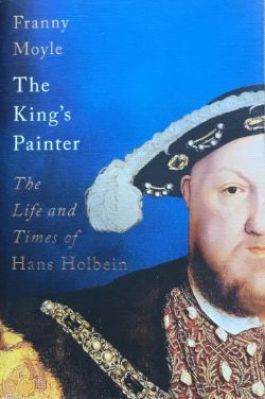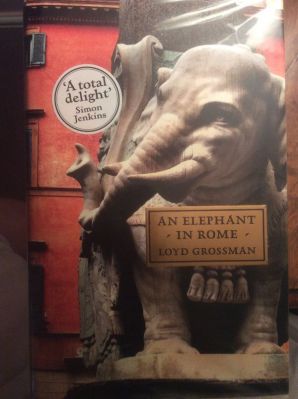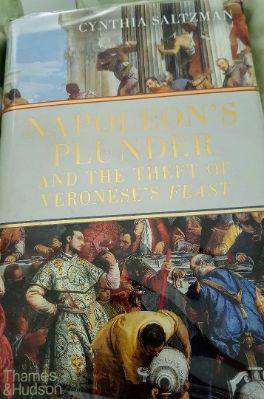


Book recommendations
This page will keep members informed about books on arts topics, concentrating on items of general interest.
Books for sale
If you are looking for a book on a particular artist or arts topic, you may like to contact Lynne Vaughan as we now have a great range of second hand art, gardening and embroidery books. These have been donated by members and all proceeds go towards funding Young Arts projects, which Lynne coordinates. Books are on sale before each of our lectures.
Recommendations
If you’ve recently read something on the arts that you think would be of interest to members then please let us know, using the form lower down this page. We will use the information you provide to add more book recommendations to this page.
Sophie Haycock: ‘Madame Matisse’. Published by Doubleday April 2025. This is a novel which traces the life of Henri Matisse, as seen through the lives of three women: his wife Amélie, his daughter Marguerite and his companion Lydia Delectorskaya (a Russian émigreé). All these women inspired his work, the latter in particular sustaining him, especially when in later life and in ill health. The novel gives some insight into how Matisse worked although I should have liked more about his rivalry with Picasso and relationship with other artists. It would have been illuminating to learn more about his artistic techniques. Overall, the book is enjoyable and takes the reader through fifty years of French artistic life. Copy available in the library.
Laura Freeman: Ways of Life: Jim Ede and the Kettle’s Yard Artists. Penguin Random House, UK 2023. This inspirational book is about Jim Ede, his meetings and friendships with artists over the best part of the 20th century, how he supported and championed them, in many cases becoming responsible for their success. Buying three run down cottages in his 60s, he transformed them into the Kettle’s Yard in Cambridge where he welcomed anyone and everyone, many students, between 2-4pm to look round his home with its stunning collection of art (David Jones, Ben and Winifred Nicholson, Barbara Hepworth, Henri Gaudier-Brzeska, Brancusi, Christopher Wood…). He then served them tea and toast. He was an avid collector; placing his objects and pictures with immense care, always aware of light and shadow. What is more, he left his collection at Kettle’s to Cambridge University where we can visit for ourselves. I do recommend both the book and the place. A beautiful book with superb illustrations. Copy available in the library,
Irene Vallejo: ‘Papyrus’ The Invention of Books in the Ancient World. This is a challenging book as its scope, covering over four thousand years, is really a history of civilisation and its striving to record our world on stone tablets, then papyrus (scrolls and then
codices), and eventually paper. We learn about the history of libraries, how they were deliberately destroyed and how little survives from them. Before the printing press there were armies of copyists who laboured to make copies of texts. The medieval monks and nuns added their wonderful illustrations. The writer cleverly refers to the etymology of words we take for granted, such as ‘text’, ‘textile’, from the Latin ‘to weave’ as the weaving of stories first in speech and then in writing was how it all began. Who wrote them? Who read them? Why were the libraries destroyed? How did it all begin? Which civilisations led the way and why have some authors survived while others are only scraps? I recommend this book for anyone who would like answers to these questions and to anyone who loves reading. There is a copy in Bedford Library.
James Fox: The World According to Colour. Penguin, 2021. James Fox has chromophilia - a love of colour. That's something which suffuses every page of this wide-ranging and very accessible book. Fox tells us about his own early fascination with colour, and how he became an Art Historian, then writes in turn about seven colours. These chapters each have a subtitle, followed by a quotation - sometimes from an artist, sometimes a poem. The chapter on yellow, for example, is subtitled 'Twilight of the Idols', has a quotation from Picasso about the sun, and then describes an installation in Tate Modern's turbine hall in 2003; the rest of the chapter delves into archaeology, science, mythology, anthropology and so much more. Malvolio was gulled with yellow cross-gartered stockings; Turner's favourite colour was yellow, especially chrome yellow - a pigment only developed in his lifetime, and one which he espoused immediately. It was made from a mineral from Siberia called crocoite, after the Ancient Greek for saffron: krokos. This book is written in an assured, relaxed style, by an author who is knowledgeable but carries his learning lightly, and always with consideration for his reader.
Alicia Foster: Gwen John: Art and Life in London and Paris. Thames and Hudson, UK 2023. Taking us through Gwen John’s life, this fascinating book shows how she developed her technique, concentrating on solitary figures and interior rooms, how she acquired her models, not least herself, and stood against the ‘norms’ of the time by living alone in Paris. Eventually, she had an Exhibition in London but she was undervalued in a man’s world. The book is beautifully illustrated, with many full page pictures and written on thick paper, a delight to touch. It’s time Gwen is assessed not just as an adjunct of her brother. If only the Pallant House Gallery, where this is a current Exhibition of her work, were closer to Bedford! There is a copy in the Library.
Douglas Bruton: With or Without Angels. Fairlight Books, Oxford 2023. This hybrid and innovative short novel responds through fiction to ‘The New World’, the final artwork by the late artist Alan Smith-which is in turn a response to an eighteenth-century fresco, Giandomenico Tiepolo’s ‘Il Mondo Nuovo’ which can be seen in the Ca’ Rezzonico museum in Venice. I found this story, revolving round these art works, moving and profound: an exploration of the creative process and the viewer’s responses to art, how one prepares for and comes to terms with a terminal illness and also a love story. There is a copy in Bedford Library.
Sophie Haydock: The Flames. This is a very readable book giving insight into the life, creativity and charisma of Egon Schiele. His four Muses tell the story of his short life and their relationship with him. The background of the Viennese Secession, his friendship with Klimt, the approach of WW1 and Vienna’s reaction to his radically new depiction of women (and men) are beautifully explored. Published March 2022 by Penguin Random House.
Suzanne Fagence Cooper: How We Might Live: At Home with Jane and William Morris, Quercus, 2022. Our members may remember Suzanne’s stunning lecture on Ruskin and her book ‘To see Clearly’. This mid-to-late Victorian period is certainly her speciality as she reveals the creative processes of the Arts and Crafts movement, how it grew, its influence and the wide sphere of Arts it encompassed. William used his inherited wealth to benefit other artists. His lifelong friendship with Burne-Jones and other significant figures of the period, his love of the medieval, the natural world, his socialist work and his Kelmscott Press are all explored in this detailed study. Particularly revelatory was the part Jane played in the running of the household, the entertaining of the circle, and her wonderful talent as an embroiderer. Their daughter May also played a major role; both of their parts have been downplayed or ignored in the past.
Jane’s relationship with Rossetti is explored, her role as model and muse. I shall certainly ‘see’ her in the many Rossetti paintings of the period. There is a copy in Bedford Library.
Sue Prideaux, Edvard Munch Behind the Scream, Yale University Press, 2005. A long life, a tortured life but such a creative life! This books charts it all: his family relationships, his love life, his poverty until mega riches very late on, his time in an asylum. It is a fascinating study of the artist who brought us so much more than ‘The Scream’. The book has wonderful colour pictures. There is a copy in Bedford Library.
Tony Faber, Faber and Faber: The Untold Story. Faber and Faber, London, 2021.The author provides a magnificent insight into the literary world of the twentieth century including TS Eliot’s role in securing new young poets, such as Ted Hughes and playwrights, such as Tom Stoppard for Faber and Faber. The book covers reproduced in the book are period pieces.
Laura Knight, The Magic of a Line, William Kimber & Co, London, 1965. This is the lively autobiography of Dame Laura Knight, RA. which charts her development as an artist, including her long and very happy marriage with Harold and their travels to learn their craft. The book has some fine line drawings which seem to represent the ‘magic’ of the book’s title. She devotes a chapter to her time in Nuremberg recording the trial.
Tristram Hunt, The Radical Potter: Josiah Wedgwood and the Transformation of Britain, Penguin Random House, 2021. A fascinating account of the growth of Josiah Wedgwood’s empire in The Potteries.
Mary Beard, Twelve Caesars: Images of Power from the Ancient World to the Modern, Princeton University Press, 2022. Mary Beard’s effervescent style makes this book joyous! It draws on her scholarship in the Classics to illuminate how the 12 Caesars have influenced art of all kinds, from statues to paintings, to prints and tapestries, as well as coins.

